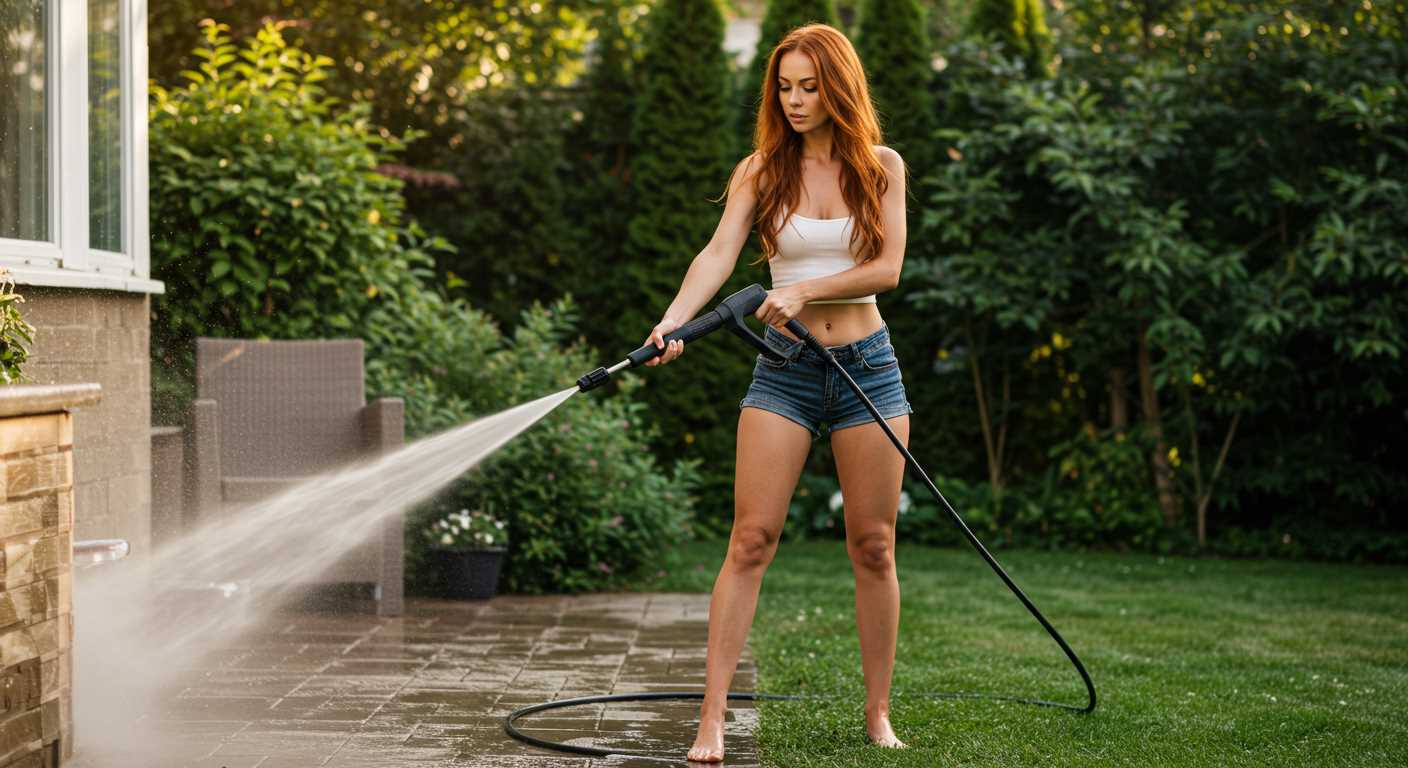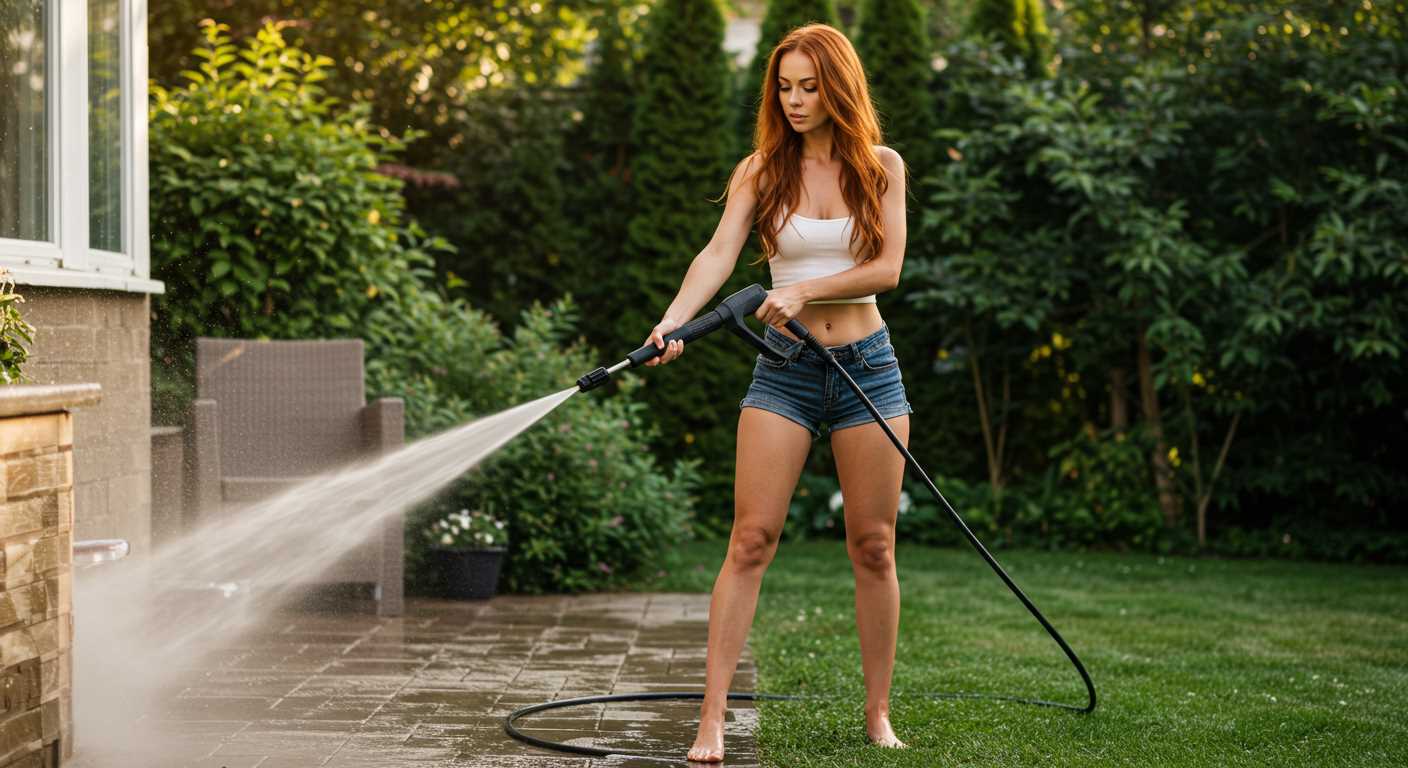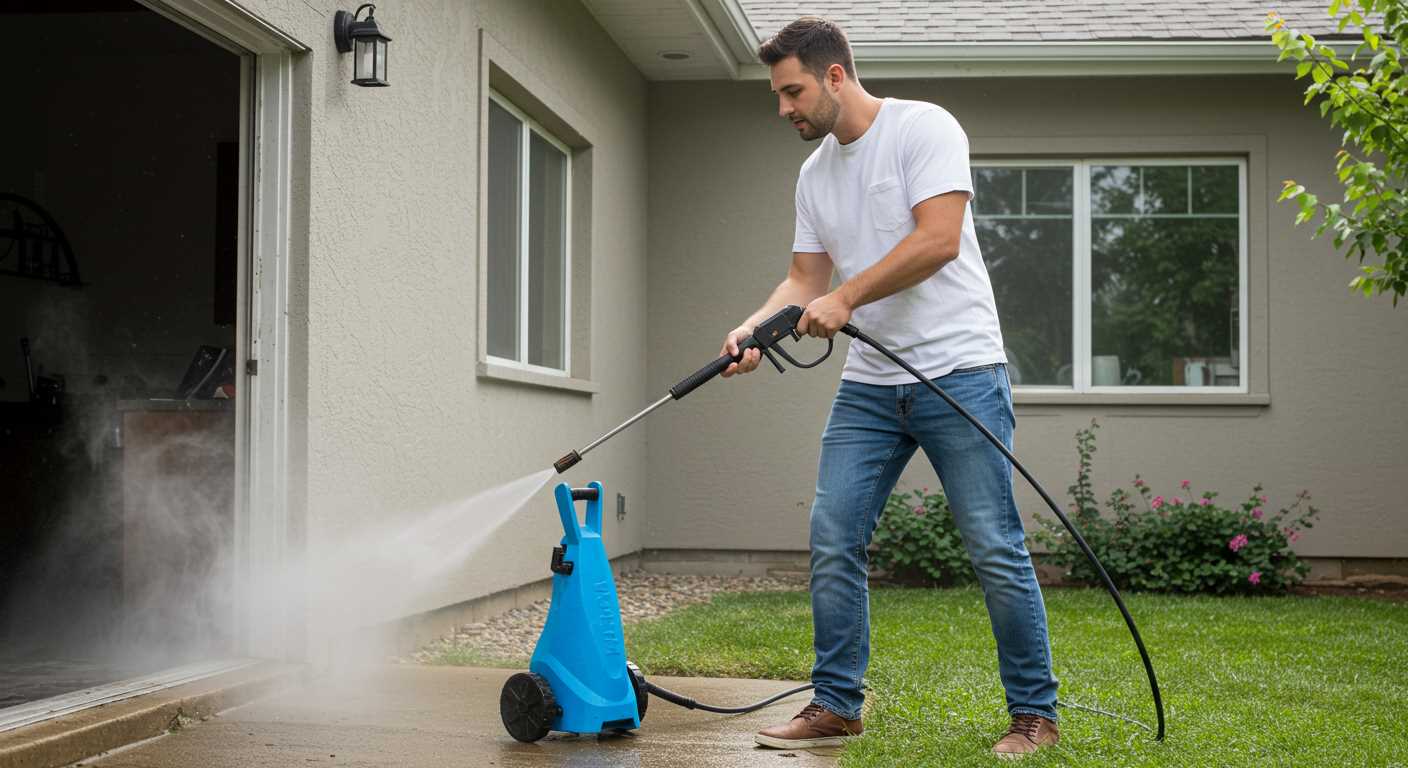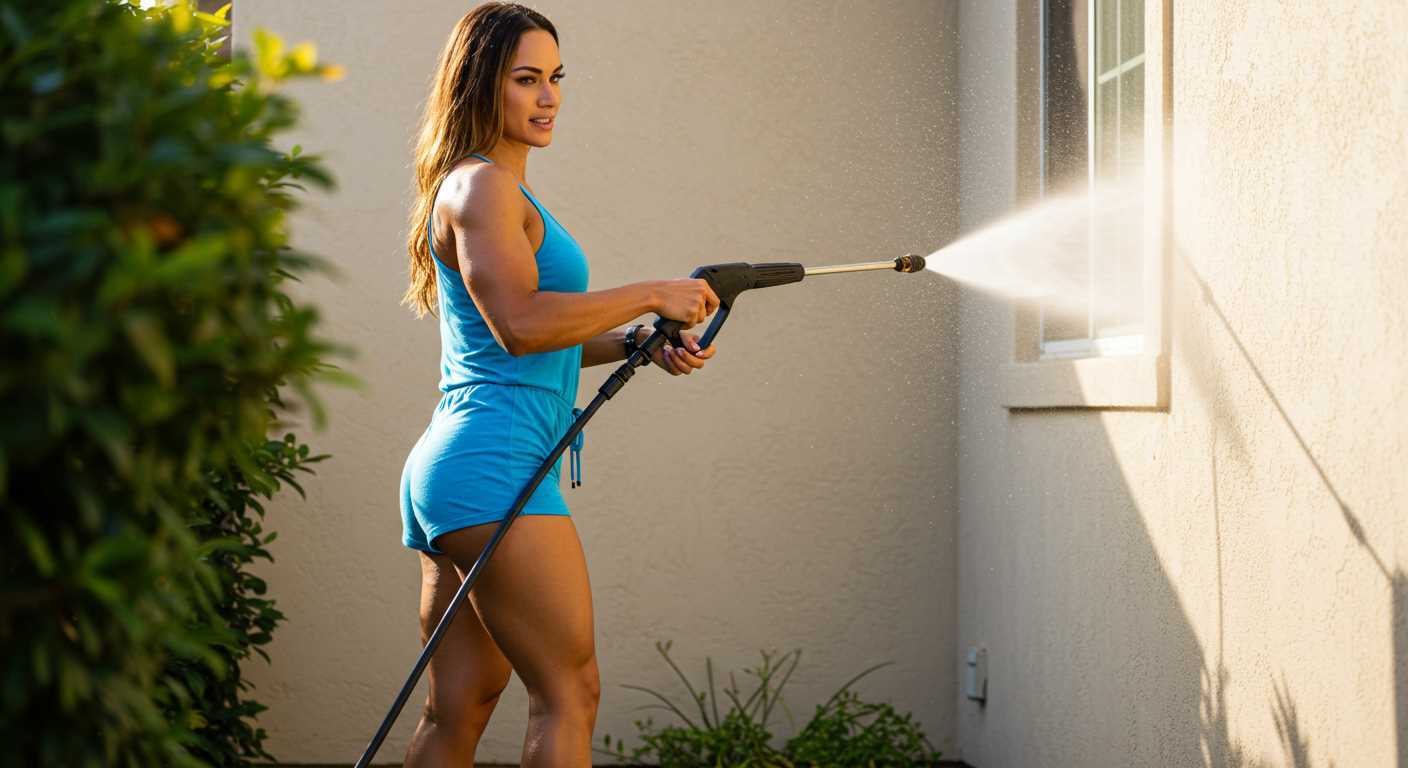




First and foremost, ensure that the trigger mechanism is free from any debris or buildup. I’ve often encountered instances where dirt or grime accumulates in the housing, causing the trigger to become unresponsive. A simple clean with a damp cloth can do wonders.
If cleaning doesn’t resolve the issue, check the lubrication of the trigger assembly. During my years in the industry, I found that a lack of proper lubrication can lead to sticking. A light application of silicone spray or a similar lubricant on the mechanical parts can restore smooth operation.
Another common culprit is the internal components, particularly the spring mechanism. Over time, springs can weaken or even become misaligned. I once had a client whose unit malfunctioned due to a misaligned spring; after reassembling it correctly, the problem was resolved. Regular maintenance checks can prevent such issues from escalating.
Finally, ensure the unit is used according to the manufacturer’s guidelines. Mismatched nozzles or incorrect pressure settings can strain the system, leading to unforeseen problems. I always advise users to refer back to the manual to maintain optimal functionality.
Reasons for Your Cleaning Equipment Handle Malfunctioning
If your cleaning device handle remains engaged, it’s likely due to a malfunctioning trigger mechanism. This can occur when debris accumulates within the handle, preventing it from returning to its neutral position. Regularly cleaning the handle and ensuring it is free from blockages can help mitigate this issue.
Worn Components
Wear and tear on internal parts can lead to sticking. Over time, seals and springs lose their elasticity, which can hinder the trigger’s movement. Inspect these components for signs of wear, and consider replacing them if necessary. An easy fix often involves purchasing a repair kit specifically designed for your model.
Incorrect Assembly
If you’ve recently disassembled your equipment for maintenance, ensure that all parts are correctly reassembled. Misalignment can cause undue pressure on the trigger mechanism, resulting in it being jammed. A quick review of the assembly instructions should clarify proper placement and orientation.
Always check the hose connections for leaks as well. A leak can create pressure imbalances that might also affect trigger performance. Regular maintenance checks will save you time and frustration in the long run.
Finally, if problems persist, contacting customer support for advice tailored to your specific model can provide additional solutions. Experience has shown that sometimes, a quick chat with an expert can uncover issues you may not have considered.
Common Causes of Pressure Washer Gun Sticking
If you’re struggling with your cleaning tool not releasing water smoothly, there are several reasons this might be happening. Here are the most common culprits to consider:
1. Debris Buildup
Over time, dirt and grime can accumulate within the nozzle or trigger mechanism. This can obstruct the flow and cause the handle to jam. Regularly inspecting and cleaning these components can prevent this issue.
2. Damaged O-Rings
Worn or damaged seals can lead to leaks and hinder proper function. If you notice any cracks or wear on the O-rings, replace them to restore smooth operation.
3. High Pressure Settings
Using excessively high pressure may cause the nozzle to become unresponsive. Adjusting the pressure settings to a lower level can help in easing the operation and prevent sticking.
4. Faulty Trigger Mechanism
If the trigger is not functioning as intended, it may get stuck in the engaged position. Inspecting the trigger assembly for wear or damage is crucial. Sometimes, a simple lubrication can resolve sticking issues.
5. Incorrect Assembly
After reassembling the unit, components may not align properly, leading to operational issues. Double-checking the assembly against the manual can help ensure everything is in place.
6. Water Quality
Using hard water can cause mineral buildup in the system, which can affect how smoothly components operate. Consider using a water softener or regularly descaling the unit to mitigate this problem.
7. Temperature Extremes
Extreme temperatures can affect the materials used in the assembly. Cold weather may cause plastic parts to become brittle, while heat can warp components. Storing your equipment in a controlled environment can extend its lifespan.
By addressing these common issues, you can significantly improve the functionality of your cleaning equipment and avoid the frustration of a stuck trigger during your tasks.
How to Identify a Sticking Pressure Washer Gun
To pinpoint the reason for a malfunctioning trigger mechanism, examine these key areas:
Visual Inspection
- Check for any visible wear or damage on the trigger and housing.
- Look for debris or buildup around the nozzle and trigger area.
- Inspect the hose connections for any signs of leaks or blockages.
Functional Tests
- With the unit off, manually operate the trigger. If it feels stiff or unresponsive, lubrication may be necessary.
- Test the unit with water running through it to see if the issue persists under pressure.
- Release the trigger and observe if it returns to its original position smoothly; any delay indicates a potential sticking point.
Regular maintenance and cleaning will prolong the life of your equipment and prevent these issues. Consider investing in a karcher residential pressure washer for reliable performance and ease of use.
Steps to Clean Your Karcher Pressure Washer Gun
To maintain optimal performance, regular cleaning of your cleaning tool’s handle is essential. Here’s how to do it effectively:
Required Tools and Supplies
Gather the following items before you begin:
- Warm soapy water
- Soft brush or toothbrush
- Microfibre cloths
- Bucket
- Water source
Cleaning Process
Follow these steps for a thorough clean:
- Disconnect the unit from the power source and detach the handle from the hose.
- Mix warm water with a mild detergent in a bucket.
- Dip the soft brush into the soapy solution and gently scrub the exterior of the handle, paying special attention to the trigger and nozzle connections.
- Rinse the handle under running water to remove any soap residue. Ensure no water enters the internal components.
- Use a microfibre cloth to dry the handle thoroughly, preventing moisture from causing issues.
- Reattach the handle and perform a quick test to ensure it operates smoothly.
Maintenance Tips
Implement these practices to extend the lifespan of your equipment:
| Tip | Description |
|---|---|
| Regular Inspection | Check for any signs of wear or damage before use. |
| Store Properly | Keep it in a dry place away from extreme temperatures. |
| Avoid Blockages | Ensure no debris is trapped in the nozzle or connections. |
By following these straightforward steps and tips, you’ll keep your cleaning tool in top condition, ensuring its reliability for future tasks. Regular maintenance not only enhances performance but also saves you from unexpected issues during use.
Tips for Preventing Gun Sticking Issues
Regular maintenance is key. After each use, spray a lubricant designed for high-pressure equipment on the trigger mechanism. This simple step can significantly reduce friction and prevent sticking.
Always check the nozzle for debris. A clogged nozzle can create excessive pressure that affects the trigger. Cleaning it thoroughly after each session ensures smooth operation and extends the life of the tool.
Inspect the O-rings and seals regularly. These components can wear out over time, leading to leaks and operational issues. Replacing damaged parts immediately can prevent bigger problems down the line.
Store your device properly. Keeping it in a cool, dry place away from direct sunlight can prevent rubber parts from degrading. A protective cover can also keep dust and moisture away, which can cause sticking.
Avoid over-tightening connections. Excessive force can cause misalignment, leading to operational difficulties. Hand-tightening is usually sufficient for most fittings.
Use the correct pressure settings for different tasks. High pressure isn’t always necessary and can strain the mechanism. Adjusting settings according to the job helps maintain functionality.
Finally, consider using a quality detergent specifically formulated for high-pressure cleaning. Using the wrong soap can leave residues that make components sticky. Always follow the manufacturer’s recommendations for cleaning agents.
When to Seek Professional Repair for Your High-Pressure Cleaning Equipment
Noticing persistent issues with your cleaning device? If you’ve cleaned the components and followed all maintenance guidelines but the malfunction lingers, it’s time to consult a specialist. Signs indicating the need for professional intervention include unusual noises, leaks, or failure to build pressure after basic troubleshooting. Ignoring these symptoms can escalate the problem, potentially leading to more extensive and costly repairs.
Signs You Need Expert Assistance
When there’s a significant drop in performance, like reduced water flow despite a clean nozzle, it’s a clear red flag. Additionally, if you find any physical damage to hoses or connectors, professional evaluation is necessary. I once encountered a model with a persistent leak that I couldn’t resolve on my own. After taking it to a technician, I discovered a worn-out seal that was hard to identify without experience. Trusting a professional can save you time and prevent further damage.
What to Expect from Professional Services
When you take your equipment to an expert, expect a thorough inspection. Technicians will assess not only the obvious issues but also underlying problems like motor wear or electrical faults. They may also recommend routine maintenance practices to extend the lifespan of your device. Investing in professional repair often pays off by ensuring reliable performance and avoiding future headaches.
How to Properly Maintain Your Karcher Pressure Washer
Regular upkeep significantly enhances the lifespan of your cleaning equipment. Start with a thorough check of the water inlet filter. Over time, debris can accumulate, leading to reduced performance. Cleaning this filter every few months is a simple yet effective task that can save you from future headaches.
Next, inspect the hoses for cracks or wear. A damaged hose can cause leaks, affecting pressure and efficiency. If you notice any signs of damage, replacing the hose promptly is a wise choice. I recall a time when a minor leak turned into a major inconvenience during a weekend clean-up.
Another critical area is the nozzle. Different tasks require different nozzles, and using the wrong one can lead to clogging. Make it a habit to clean or replace the nozzle when needed. A clogged nozzle can lead to uneven cleaning results, which is frustrating, especially when tackling tough grime.
Don’t overlook the motor. Keeping it clean and free from dust can help maintain optimal performance. I often use a soft brush to remove any dust that accumulates. This small step has made a noticeable difference in the longevity of my equipment.
Lastly, after each use, run clean water through the system to flush out any detergent or debris. This helps prevent blockages and keeps the internal components in good condition. I learned this the hard way when a build-up caused a malfunction during a crucial cleaning job.
For additional cleaning tips, especially for different surfaces, check out this guide on cleaning laminate wood floors with a steam mop. It provides great insights that can also apply to maintaining various surfaces in your home.
Understanding the Role of Seals and O-Rings in Gun Functionality
Regularly inspecting and replacing seals and O-rings can prevent many issues related to the operation of your cleaning device. These components play a significant role in maintaining pressure and ensuring a smooth operation. When they wear out or become damaged, they can lead to leaks and operational hiccups, making it more challenging to get the job done effectively.
In my experience, even a small crack in an O-ring can cause unexpected problems. For instance, I once encountered a situation where a client was frustrated with intermittent performance. After a thorough inspection, I found that one of the O-rings was slightly worn. Replacing it restored functionality and saved the client time and effort.
Proper lubrication of these components is also crucial. A dry seal can lead to friction, resulting in sticking. I recommend applying a lubricant specifically designed for rubber materials during maintenance. This simple step can extend the life of seals and O-rings significantly.
When assessing your equipment, pay close attention to the condition of these parts. If you notice any signs of wear, such as brittleness or deformation, it’s time to replace them. Keeping a spare set on hand can save you from unexpected downtime.
Lastly, remember that the quality of replacement parts matters. Opt for original components or those from reputable manufacturers to ensure compatibility and reliability. Investing in high-quality seals and O-rings pays off in the long run, enhancing the overall performance of your cleaning tools.
FAQ:
What could cause my Karcher pressure washer gun to stick?
Several factors may cause the gun to stick. One common reason is the accumulation of dirt or debris in the trigger mechanism. If the gun has been exposed to moisture, it might also lead to rust or corrosion that can hinder movement. Another possibility is that the O-rings or seals inside the gun are worn out, which can affect functionality. Lastly, using the gun without the proper amount of lubrication can lead to sticking issues.
How can I fix a sticking pressure washer gun?
To fix a sticking pressure washer gun, start by disconnecting it from the power source. Inspect the trigger mechanism for any visible dirt or debris and clean it using a soft brush or cloth. If you notice any signs of rust, apply a suitable lubricant to the affected areas. Check the O-rings and seals for wear and consider replacing them if necessary. After cleaning and lubricating, reassemble the gun and test it to see if the issue is resolved.
Is it safe to use my Karcher pressure washer gun if it sticks occasionally?
Using a pressure washer gun that occasionally sticks is not advisable, as it can lead to unpredictable operation and may pose a safety risk. A sticking gun can cause sudden bursts of pressure, potentially resulting in injury or damage to surfaces. It’s best to address the sticking issue before continuing use to ensure safe operation and to prolong the lifespan of your equipment.
What maintenance should I perform to prevent my pressure washer gun from sticking?
Regular maintenance is key to preventing a pressure washer gun from sticking. After each use, clean the gun thoroughly to remove any dirt or debris. Periodically check and replace O-rings and seals to ensure they remain in good condition. Additionally, lubricate the moving parts of the gun with a silicone-based lubricant to keep them functioning smoothly. It’s also advisable to store the pressure washer in a dry place to avoid moisture-related issues.
Can I use any lubricant on my Karcher pressure washer gun?
No, not all lubricants are suitable for a pressure washer gun. It’s important to use a lubricant that is specifically designed for plastic and rubber parts. A silicone-based lubricant is often recommended, as it provides adequate protection without causing damage to the components. Avoid using petroleum-based lubricants, as these can degrade rubber O-rings and seals, leading to further issues.
What are the common reasons for a Karcher pressure washer gun to stick?
There are several reasons why a Karcher pressure washer gun might stick. One common cause is the build-up of dirt and debris in the trigger mechanism, which can prevent it from moving smoothly. Another possibility is that the internal components may be worn or damaged, leading to a malfunction. Corrosion from prolonged exposure to moisture can also affect how the gun operates. Lastly, if the pressure washer has been stored improperly, it may cause seals or gaskets to become stiff, resulting in a sticking trigger. Regular maintenance and cleaning can help prevent these issues.
How can I fix a sticking trigger on my Karcher pressure washer gun?
To fix a sticking trigger on your Karcher pressure washer gun, start by disconnecting the gun from the pressure washer and ensuring it is completely dry. Inspect the trigger mechanism for any visible debris or dirt; if found, clean it gently with a soft brush or cloth. If the trigger still sticks, apply a small amount of lubricant designed for plastic parts to the moving components. Check for any signs of wear or damage that may require replacement parts. If the problem persists, consulting the user manual for specific troubleshooting steps or contacting Karcher customer support for further assistance may be necessary. Regular maintenance can help avoid this issue in the future.








.jpg)


